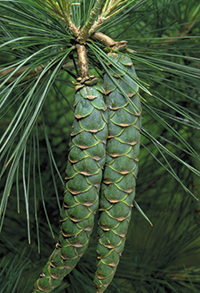Ontario's provincial symbols
Located in east-central Canada, Ontario has the biggest population in the country and is the second-largest province in total area.
Origin of the name
The word “Ontario” comes from the Iroquois word “kanadario”, meaning “sparkling” water. The province is well named, since lakes and rivers make up one-fifth of its area. In 1641, “Ontario” described the land along the north shore of the easternmost part of the Great Lakes. Later, the southern part of the province was referred to as “Old Ontario”. The name “Ontario” was adapted for the new era that began in 1867, when the area became a province.
Population (2006): 12,687,000
Area: Land – 891,190 km2 Fresh water – 177,390 km2 Total – 1,068,580 km2 Capital: Toronto Date of entry into Confederation: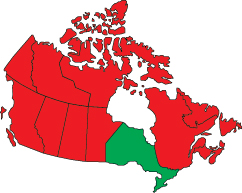
History
Ontario was first inhabited by the Algonquian and Iroquoian-speaking nations. The most important Algonquian nation in Ontario was the Ojibwa, which lived in northern Ontario. There were two major Iroquoian confederacies: the Iroquois and the Huron. The Five Nations of the Iroquois (Seneca, Oneida, Onondaga, Cayuga and Mohawk) lived near Lake Ontario and Lake Erie. The Huron nation inhabited the area near Lake Simcoe.
These nations were highly developed politically and culturally by the time the Europeans penetrated the area. In 1610, Henry Hudson became the first European to set foot in Ontario. Samuel de Champlain and Étienne Brûlé first established contact with the First Nations of Southern Ontario in 1613.
By 1774, the British controlled what is now Southern Ontario, then part of the province of Quebec. After the American Revolution, the arrival of Loyalists to this region led to the creation of a new province. The Constitutional Act, 1791, which split the province in two, renamed the area Upper Canada.
Rebellions against undemocratic government in 1837, in both Upper and Lower Canada, prompted the British to send Lord Durham to report on the troubles. As a result of Durham's recommendations, The Union Act, 1840, joined Upper and Lower Canada once again – this time as the Province of Canada. Although a more democratic and responsible government resulted, the union was not a success: Canada East and Canada West continued to be two distinct regions. They entered the Confederation conferences of 1864 as though they were separate, and they became different provinces — Ontario and Quebec — at Confederation in 1867.
Ontario is the second largest and the most populous province of Canada. At Confederation, the province was a little larger than present-day southern Ontario. Bitter border disputes with Manitoba over the area north of Lake Superior ended in 1889, when it became part of Ontario. The rest of Northern Ontario was annexed in 1912 when Ontario expanded to its current size.
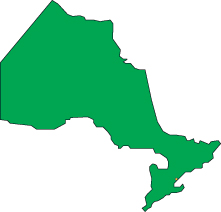
Coat of arms
Ontario was granted its coat of arms by Queen Victoria in 1868. A crest, supporters and a motto were added to the arms by King Edward VII in 1909.
The red cross of St. George, symbolic of England, appears in the upper third of the shield. The lower portion of the shield features three golden maple leaves, emblematic of Canada, on a green background. The shield is supported by a moose and a Canadian deer while a black bear appears on the crest above the shield.
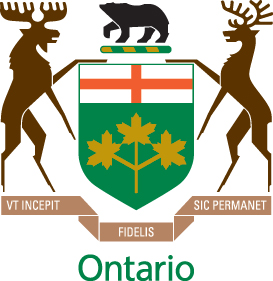
The Latin motto on the coat of arms – Ut incepit fidelis sic permanent – translates to “loyal she began, loyal she remains.” This refers to the United Empire Loyalists who settled in Ontario in the late 18th century.
Ontario is the only province or territory that uses a highly stylized rendition of its coat of arms.
Motto
Ut incepit fidelis sic permanent (Loyal she began and loyal she remains)
Flag
The flag of Ontario was adopted by the Legislature in 1965, with Queen Elizabeth II approving the use of the Royal Union Flag (Union Jack) within the flag design the same year. The flag was raised on May 21, 1965.
Ontario’s flag closely resembles the Canadian Red Ensign. The Royal Union Flag occupies the upper quarter near the staff, while the shield of arms of Ontario is centred in the fly half of the flag. The proportions of the flag are two by length and one by width.

Floral emblem
The adoption of an official flower for Ontario grew out of a movement during the First World War to choose a national floral emblem appropriate for planting on the graves of Canadian servicemen overseas.
The white trillium (Trillium grandiflorum), also known as the wake-robin and the white lily, was officially adopted as Ontario’s floral emblem in 1937. It was recommended by a special committee of botanists to the Ontario Horticultural Association. In a British botanical work published in 1760 there is a reference to the trilliums as “the herb True Love of Canada.”
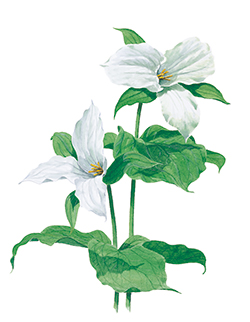
Found in the forests and woodlands of Ontario, the white trillium blooms in late April and May. The blooms are very sensitive to light, and the white flowers usually bend toward the sun as it moves across the sky. Contrary to popular belief, it is not illegal to pick a white trillium in Ontario. However, picking the flower can seriously injure the plant and it can take years to recover.
Other provincial symbols
Bird
Ontario adopted the common loon (Gavia immer) as its official bird on June 23, 1994.
Found in lakes and rivers across the province, the loon’s eerie call is associated with the beauty and solitude of Ontario’s wilderness. The loon can dive to depths of 70 metres in search of food, and stay under water for three minutes.
In 1987, Canada replaced its one dollar bill with a coin, which featured a swimming loon on the tail side. It was quickly nicknamed the “loonie”.
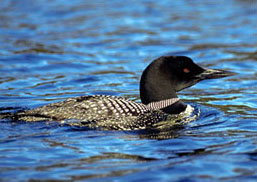
Colours
Green and yellow
Gemstone
Amethyst was adopted as Ontario’s official mineral in 1975 to represent the mineral wealth of the province.
A form of quartz, amethyst is found in clusters throughout northern Ontario, concentrating around the area of Thunder Bay. Amethyst crystals near Thunder Bay formed in cavities which were created over one billion years ago.
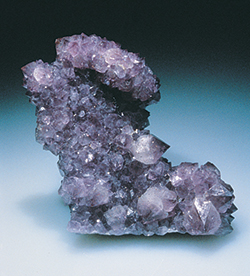
Tartan
Adopted in 2000, the Ontario tartan is made up of four blocks of colour: red, white, three shades of green and two shades of blue. The shades of green represent the forests and fields of Ontario, while the blue represents the waters. The red represents its First Nations and the white, the sky over the province.
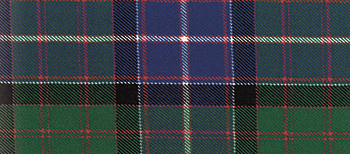
Tree
The province adopted the eastern white pine (Pinus strobus linnaeus) as an official symbol on May 1, 1984.
Found throughout Ontario, the eastern white pine – which is the tallest tree in the province and can live over 250 years – represents Ontario’s vast forests. Known as “the Tree of Great Peace" by the Haudenosaunee First Nations of Southern Ontario, the eastern white pine was also an important source of income and trade during the province’s early days.
